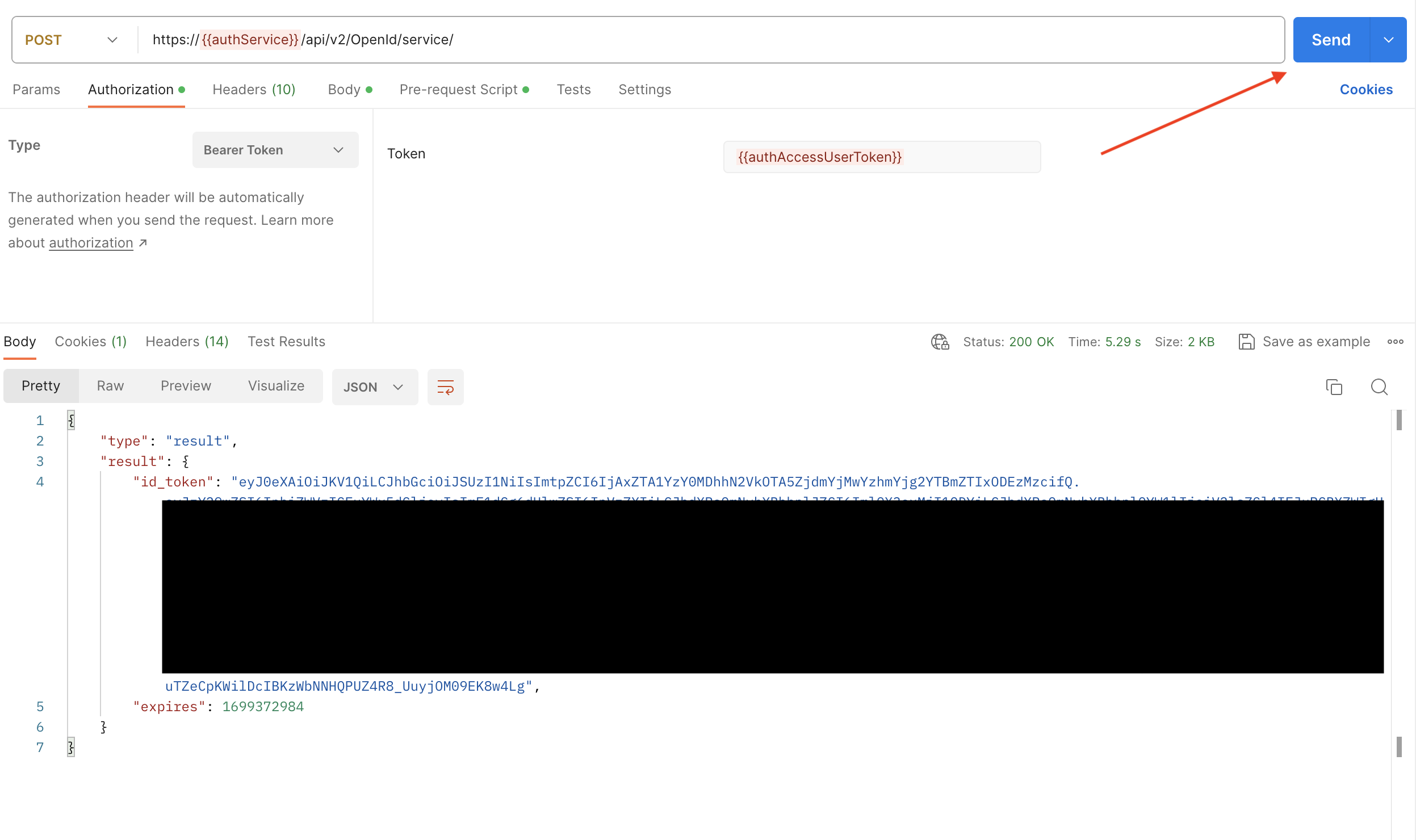const user = 'extension';
const pass = 'password';
const pbxHost = 'https://<domain>.wildixin.com';
const authService = 'auth.wildix.com';
pm.variables.set('authService', authService);
pm.sendRequest({
url: `${pbxHost}/api/v1/personal/token/?service=${authService}`,
method: 'GET',
header: {
'Authorization': 'Basic ' + btoa(`${user}:${pass}`)
},
body: {}
}, function(err, response) {
if (err || response.code !== 200) {
throw new Error('Personal token not received');
}
const personalToken = response.json().result.token;
console.log('PERSONAL TOKEN', personalToken);
pm.sendRequest({
url: `https://${authService}/api/v2/Token/`,
method: 'GET',
header: {
'Authorization': `Bearer ${personalToken}`
},
body: {}
}, function(err, response) {
if (err || response.code !== 200) {
throw new Error('Access token for auth not received');
}
const authAccessUserToken = response.json().result.accessToken;
console.log('AUTH ACCESS USER TOKEN', authAccessUserToken);
pm.variables.set('authAccessUserToken', authAccessUserToken);
});
}); | 



